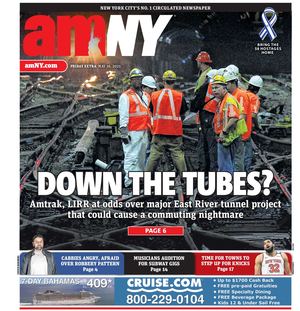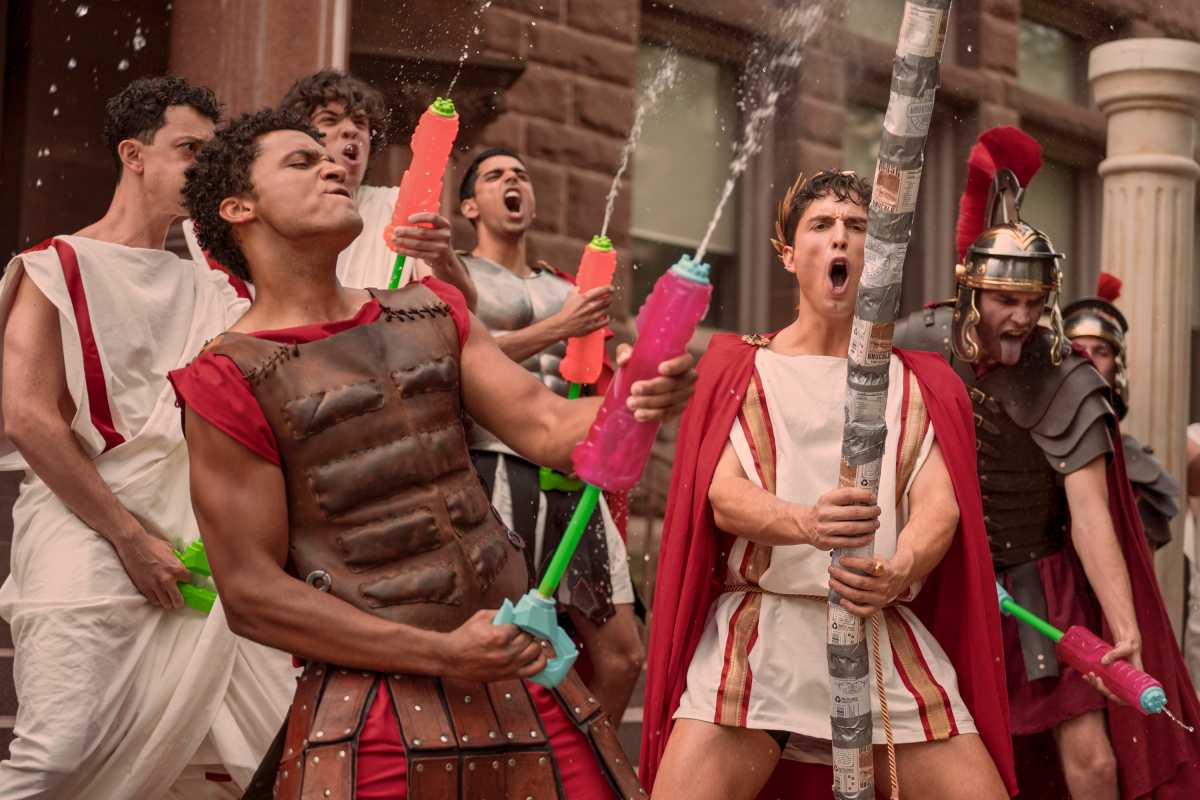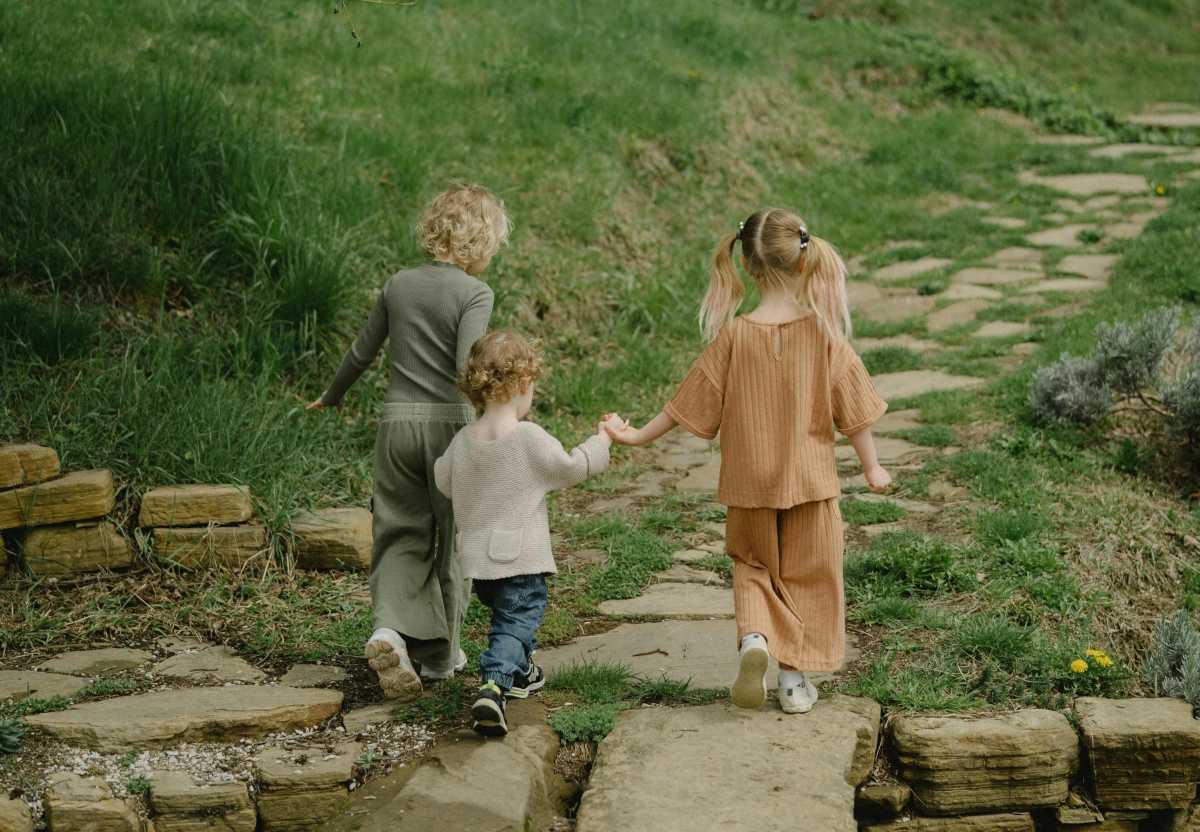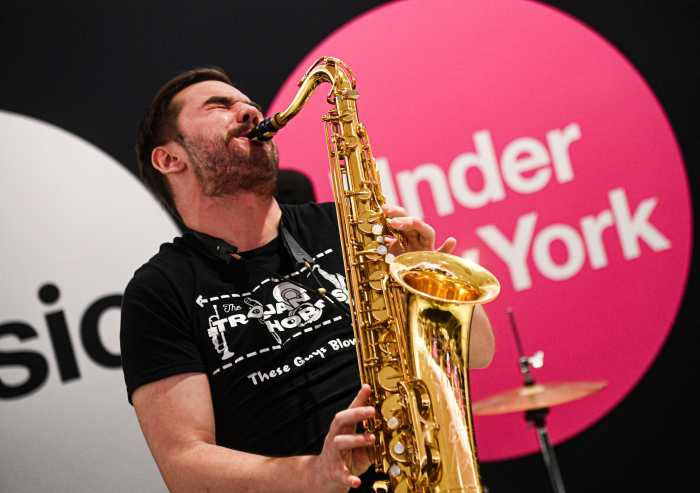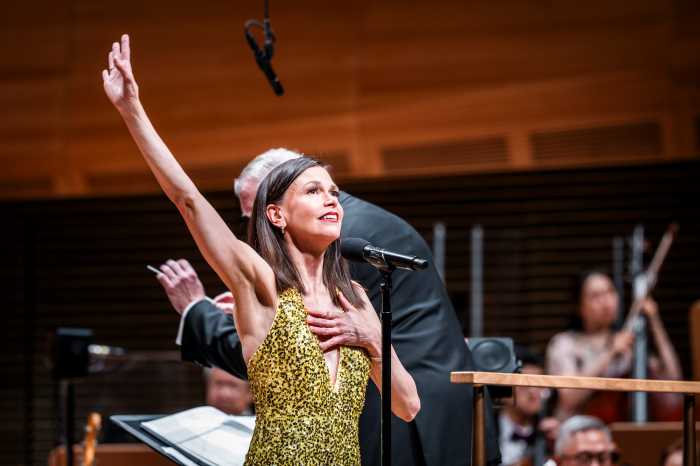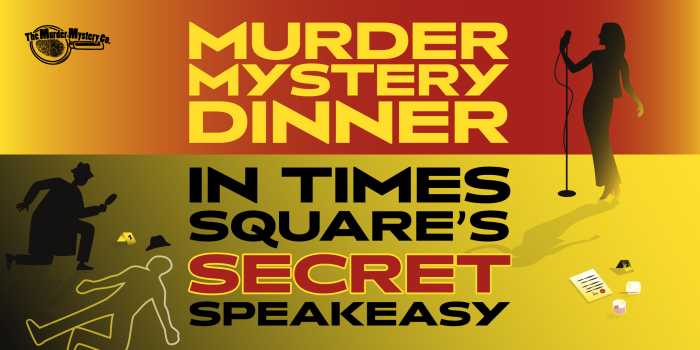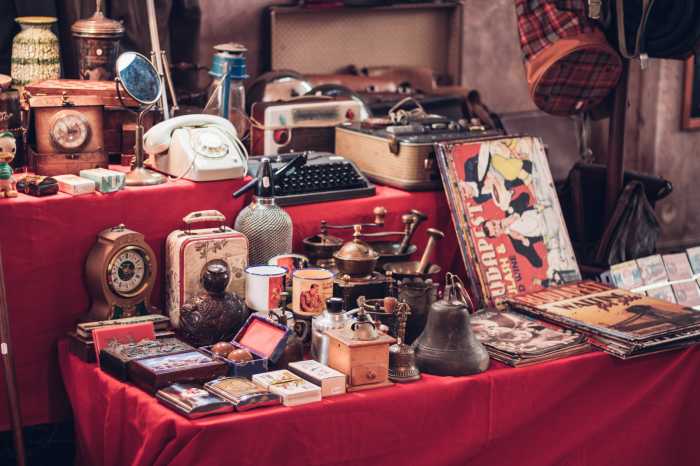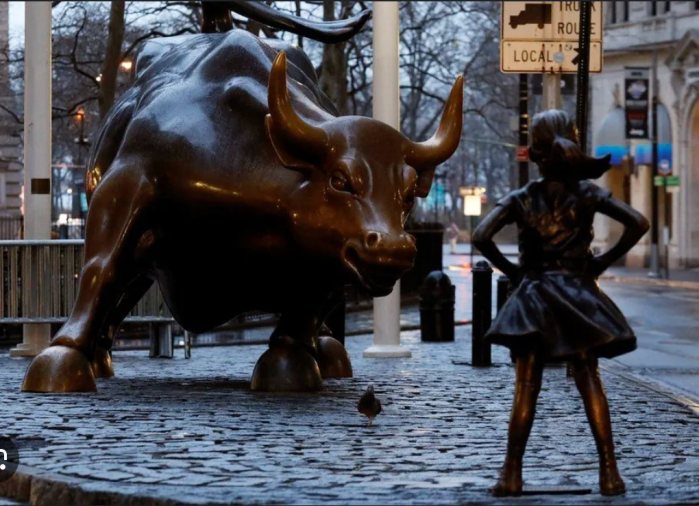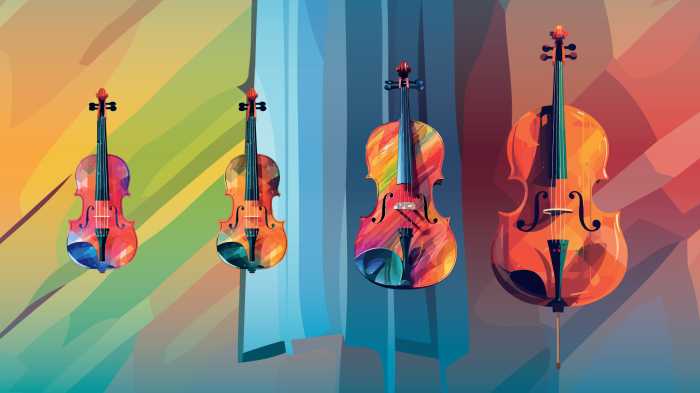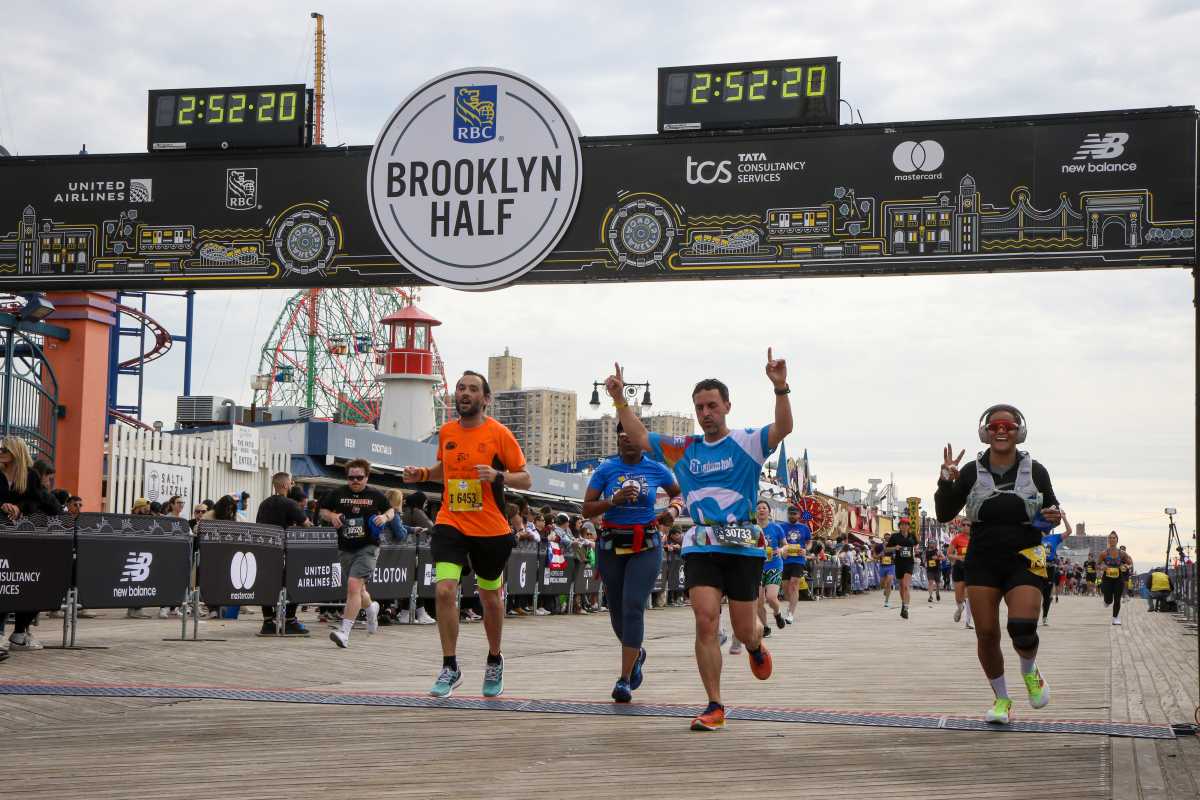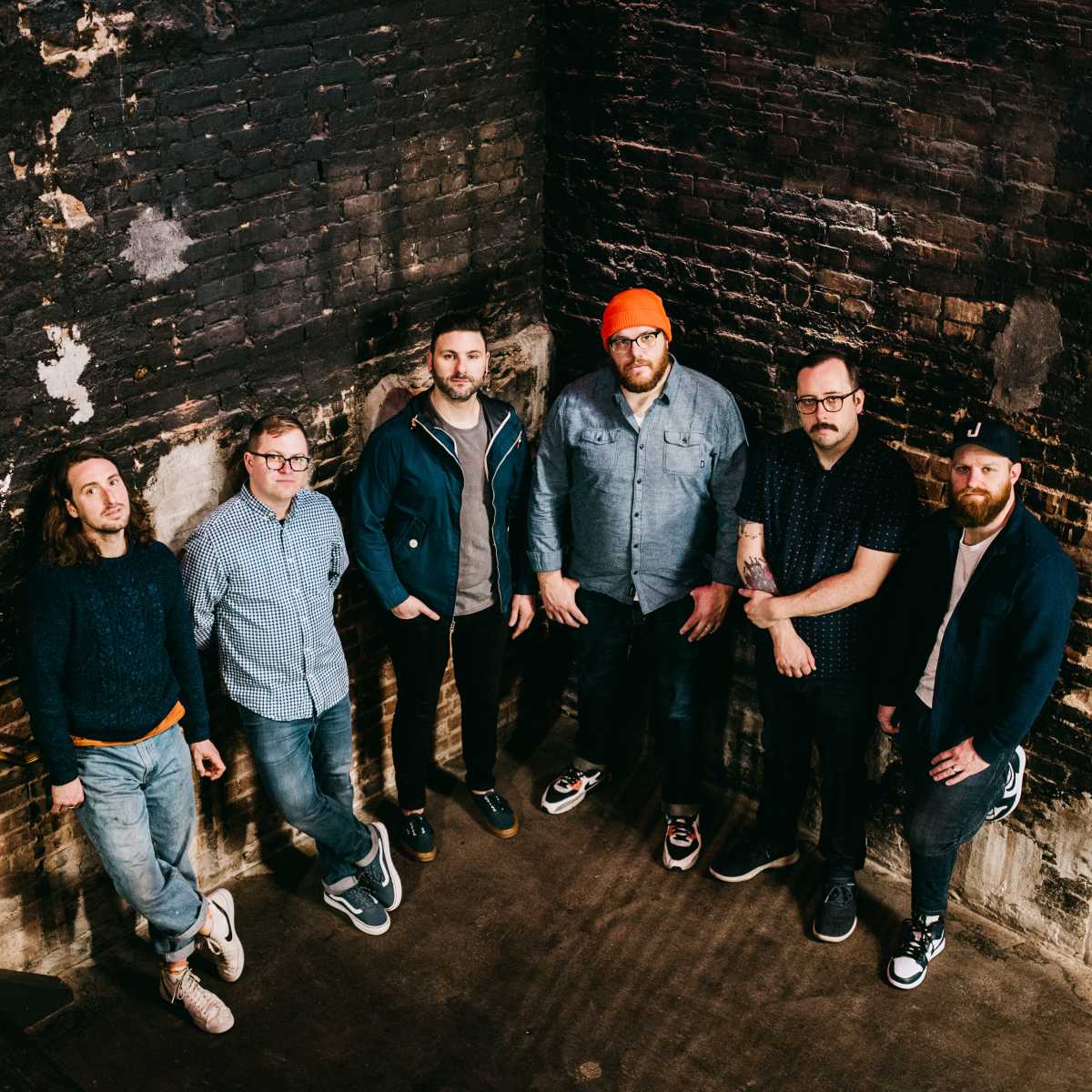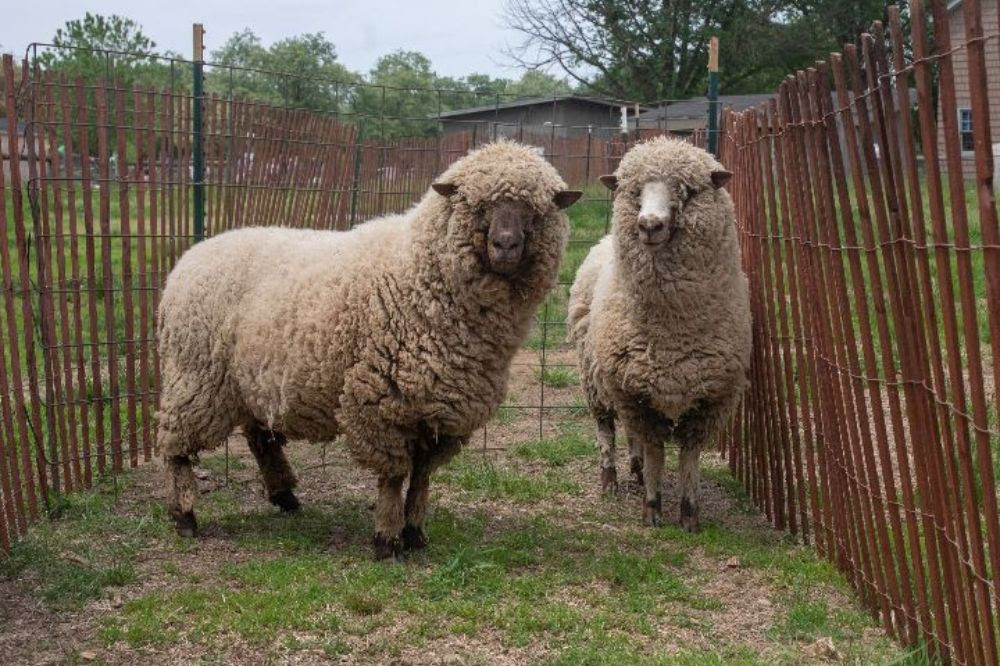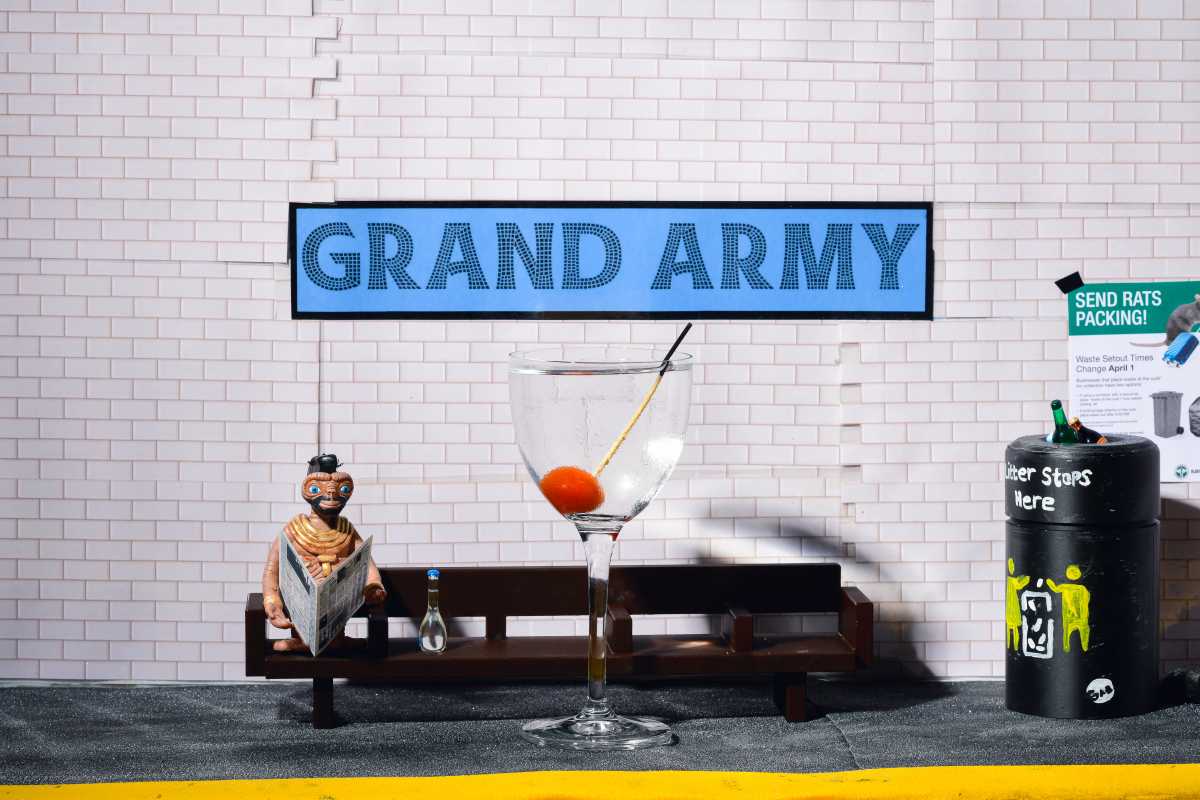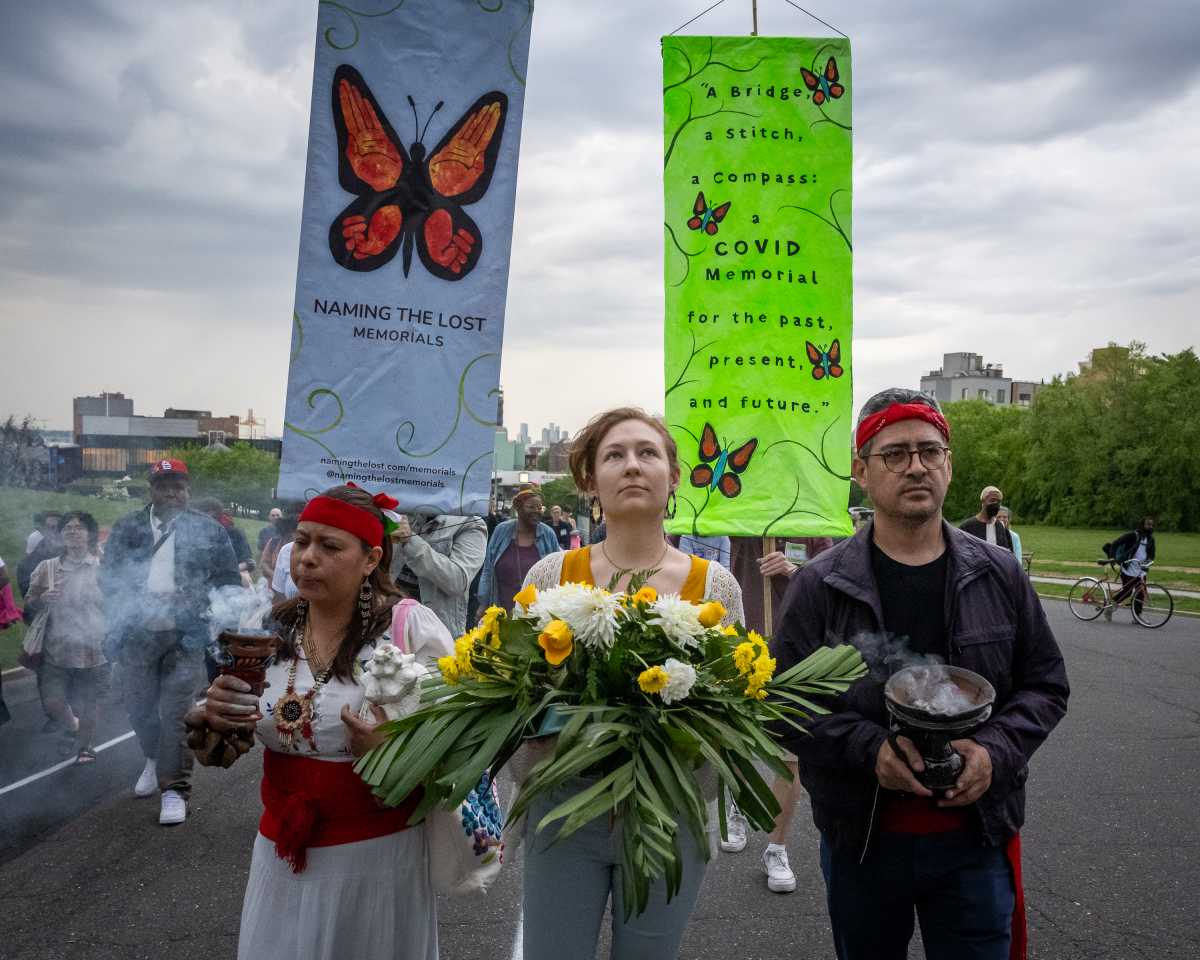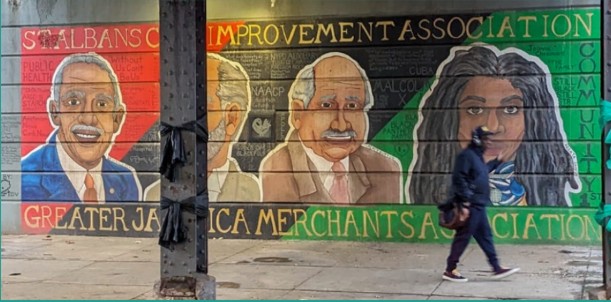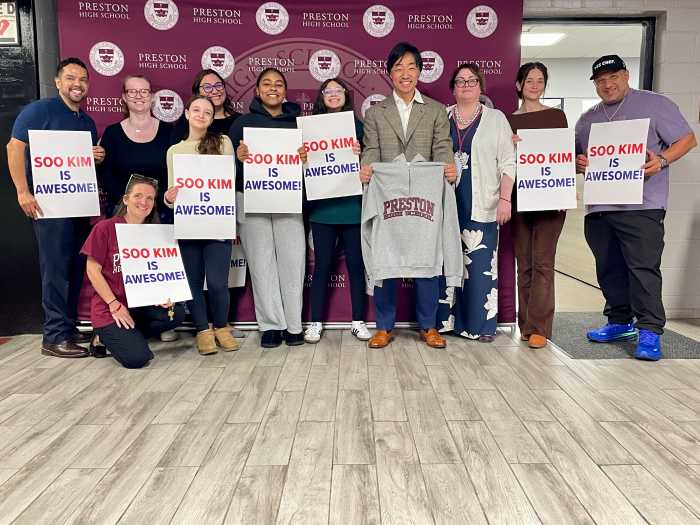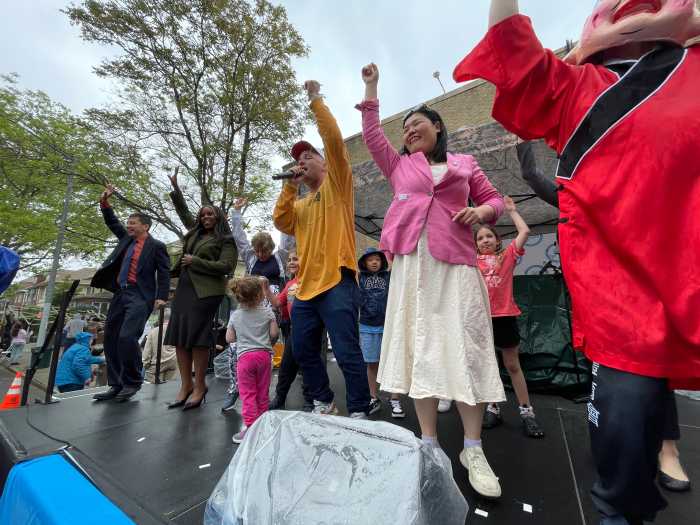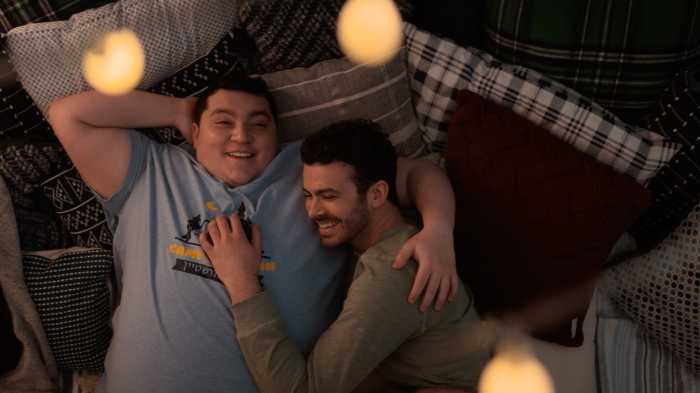Lenny Achan stood before his office whiteboard in Manhattan’s Hospital for Special Surgery on an October morning, furiously drawing clusters of bubbles as he outlined his latest thought process for company structuring.
Five miles downtown, patrons settled in to eat at The Cornelia Street Café in Greenwich Village. Surrounding them were 14 canvases of spray-painted origami and geometric subway map cutouts that will be on display until Monday, Oct. 30.
They make up Achan’s most recent art exhibit.
The chief innovation officer at the Upper East Side hospital is a master of the left and right sides of the brain — a lifelong artist rooted in graffiti and a nurse-turned-health care executive and entrepreneur. Art has remained the constant fabric of his many hats.
“A lot of people see me in different slices: They see an executive, they see a health care guy, they see an entrepreneur, they see a nurse, they see the artist,” said Achan, 40. “It’s all exactly the same to me.”
Achan’s memories of art begin at his grandmother’s house in Brooklyn.
As early as kindergarten, he would write with chalk on concrete and craft origami boats and planes to race in the gutters.
He would spend hours with pen and markers on his grade-school book report covers.
And early in his time at John Adams High School in Ozone Park, Queens, when Achan began dating his wife, Kimberly, he would draw her name in all different colors, sometimes with Disney characters like Princess Jasmine.
Art to Achan was — and remains — his most coveted form of communication.
“I love the free-thinking side of it, and the ability for art not to explicitly tell you how or what you should feel,” said Achan, who a few years ago began dedicating time — mainly on the weekends — to his art.
Growing up as a first-generation American of Indian descent in Howard Beach, Queens, in the 1980s and 1990s, Achan drew his artistic inspiration from the graffiti that surrounded him on playgrounds and subway trains. By seventh or eighth grade, Achan started lettering and drawing characters in art books and on paper before progressing to walls — with permission — in early high school. He experimented with any materials he could get his hands on, often using black, gray and pastel-colored markers and spray paint to form bold words and images.
“Access was a big part of it; not really understanding what art was, and not being formally trained, you kind of have to figure it out for yourself,” he said. And that “actually helped me be more innovative.”
At 16, Achan met graffiti artist and future mentor Luis Lamboy while working in a local printing factory. Achan was unique from the beginning, Lamboy recalled.
“He was very smart and very artistic,” said Lamboy, who now specializes in fine art. “His signature was different from anything I’d seen. Kind of robotic . . . almost how an architect would structure a building.”
Within a year, Lamboy and Achan had spray-painted a depiction of Jesus Christ’s crucifixion across Achan’s bedroom wall. Lamboy had encouraged Achan to take his artwork off paper and walls and immortalize it on canvases, and he had begun taking Achan to art shows, including his own.
“I just remember thinking, ‘Wow, there’s hundreds of people here and art hanging on the walls, and this guy [Lamboy] isn’t Pablo Picasso, he’s a kid from the Bronx,’ ” Achan said. “All of those data points started to build a matrix and a scenario in my head around, ‘OK, I could do this.’ ”
Inspired by compassion
Being an artist wasn’t Achan’s career trajectory, though. He also harbored a dream of being a male nurse.
At 9 years old, Achan sustained severe injuries in a car crash while returning from Disney World in Orlando, Florida, with his family. Being sandwiched between luggage likely saved his life — along with his mother and grandmother’s lives — when a drunken driver rear-ended them going 85 mph.
When Achan looks back at his week in the hospital, he said it isn’t tests or his wheelchair that he remembers. It was the compassion of his male nurse.
“The power of that single interaction, an introduction resulting from a disaster and chaos, was all wiped clean by compassion,” Achan said. “That is what ultimately made me a nurse.”
Achan began attending Adelphi University in 1996 for nursing, and despite shouldering a failing grade in his first nursing class, secured his degree three years later and dove into clinical work. As his career gained momentum, his artwork would fall by the wayside for more than a decade.
Achan worked for two years as a nurse in the intensive care unit at Mount Sinai Hospital in Manhattan before an award and recognition from upper-level officials propelled him to the business side, where he has been a health care executive for 16 years. His positions have included being vice president of international business development and chief communications officer for the Mount Sinai Health System, as well as chief innovation officer for the Hospital for Special Surgery for the past 18 months. Achan also became the first nurse appointed to Adelphi’s board of trustees, and he holds a slew of degrees and has created about five apps — some regarding health care and medicine, some not — through side ventures.
His success “is amazing, and I think it’s even more incredible because I’ve been there from the beginning,” said Kimberly Achan, a speech pathologist in East Meadow who works with children on the autism spectrum. She met her husband through a cousin, and later she and Achan began dating in 1993 while in high school. “Every single thing he’s wanted to do, he’s achieved.”
Amid this ascent, though, Achan said he thought he had abandoned art. It took him time to realize that in actuality he had only developed a different way of using it.
Achan uses art to put people at ease and brighten their days. As an ICU nurse, he assumed that role directly, acting as “anyone they needed me to be in that moment” to comfort them, he said.
He also uses it to break down socioeconomic barriers. As an entrepreneur, Achan invented RateMyHospital, an app that empowers patients from every academic medical center in New York City and 14 health systems nationwide to share their experiences. And as chief innovation officer at the Hospital for Special Surgery, he collaborates with inventors, biomechanical engineers and scientists to design and commercialize products and services that improve health care globally.
Achan uses art to bring to life what is stuck in his head — sometimes for a week, sometimes a year. As a health care executive and leader, business ideas or processes are always visualized for his colleagues: first with a circle, then a “ripple effect” of subsequent bubbles. Meetings sans fervent drawing on whiteboards are few and far between.
This ability to innovate and make complexities simple is rare for the industry, said Connie Klepper, a contract officer who worked with Achan at Mount Sinai for about 13 years.
“When somebody says that he thinks outside of the box, in Lenny’s head it’s like, ‘What box?’ ” Klepper said. “The universe of intelligence is Lenny’s playground.”
With increased autonomy and with encouragement from Lamboy, Achan brought that playground back to canvas in 2012.
The bulk of his recent work are spray-painted or cutout origami animals, boats and planes, many of which are made with pieces of subway maps, with the intent to alleviate the viewer’s stress and elicit memories of innocence and childhood.
Art merging history, science, math
Achan also thinks more about history and the underlying mathematical and scientific complexity of art following his education and career. His three portraits of Abraham Lincoln, for example — all wood canvases lined with pennies, doused in resin, torched and spray-painted — speak to the changes in money’s value over time and nature’s indelible presence in everyday life.
The portraits are a few of the more than 100 pieces Achan has sold since 2015. Seventy-five percent of the pieces in The Cornelia Street Café exhibit sold out within the first hour of opening night in September. Prices for his art usually range from $2,000 to $3,000.
As Achan churns out new artwork in anticipation of a joint New York show with Lamboy in January, his children, Lenny III, 9 and Katherine, 6, will continue to be his helpers. They shake his spray cans, help choose colors and get 10 percent of the earnings when paintings they contribute to sell.
About 25 canvases sit on Achan’s dining room table, waiting to be filled. Maybe he would make progress the following morning, he said, before heading to work.
“I’m really happy,” Achan said. “I’m happy just being me.”
The world according to Lenny
Very little has taught me more about how precious life is than nursing did. This profession gave me the foundation blocks and continues to develop me in all aspects of my life. It was one of the best decisions I ever made to become a nurse.
***
I am an artist because of all of the things that make me who I am. My professional work is a craft, my children are my greatest creations, my writing to self-reflect and share what I have learned through success and failure is an art to me. Mentoring and building other people with strong foundations is no different than architecture or sculpturing and shaping what I would hope they will continue to give back to others.
***
Everyone asks where I find the time to do what I do. I often reply: Do you play golf or watch Netflix all weekend? Well I don’t. Point being that everyone has time to do as much as anyone else can. They choose to use time differently than I do. At the end of the day, people make time for what they want to.
***
Graffiti is ancient and started long before spray paint was created. . . . The culture itself, however, is overshadowed by competition which never allows it to evolve as it should and be recognized by the masses as an art form.
***
Everything I do is for family. To do that, it is critical to make sure that my family is involved in all that I do and vice versa. I couldn’t be who I am without my parents, sisters, wife and in-laws. No matter what I have achieved in life, my family has been there and their names (although invisible) are on every academic degree and piece of art or article or award I have ever received. There is no such thing as a self-made man in my opinion.
